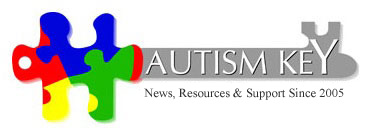
Silver Linings of Sandy Hook: Teaching Compassion in Schools
Scarlett Lewis is the phenomenal mother of six-year-old Jesse Lewis, one of the young victims of Sandy Hook. Out of her unfathomable grief, she has started a foundation dedicated to making the world a more compassionate place.
Through her Facebook page, I learned that this is Brain Awareness Week. Exciting work spearheaded by Dr. Chris Kukk is demonstrating the neuroscience of empathy vs. compassion. The difference between empathy and compassion is real and scientifically supported. Research shows that people are more empathetically connected to each other than we are consciously aware of. But empathy involves feeling others’ pain in terms of our own.
So, in effect, feeling another person’s pain leaves both persons stuck in it. Studies also tell us that empathy can be easily blocked, and not just in sociopaths. A feeling of unfairness or that a person doesn’t belong to a group effectively cancels out empathetic responses.
Compassion is a three-hundred-sixty-degree view of a situation in which you recognize a person’s problem, then actively seek solutions, bypassing the absorption of negative and isolating emotions brought on by a purely empathetic response. MRI studies show that empathy creates a negative emotion while compassion creates feelings of love, warmth and well-being.
If we train our capacity for empathy to become compassionate, the implications are no less than a paradigm shift away from self-centeredness to creating a world in which people actively help one another to the benefit of all. The ramifications are profound in terms of how caregivers function, politicians govern, businesses operate and children are taught in school.
What this sea-change represents in terms of special education specifically is monumental.
By example, I turn my attention back to Sandy Hook. We know the Sandy Hook shooter was a special-ed kid who fell through the cracks and ended up effectively in solitary confinement in his mother’s basement. It’s easy to react with fury towards his mother who is the prime mover in this cataclysmic tragedy.
From an empathetic perspective, I get the situation she was in as a result of my own child’s rocky and maladaptive school life. In his entire public school journey, I can think of just three teachers who treated him with compassion. Those brief tenures were the only times his world made sense and he could function or even flourish. Yet my pain is so close to that of the shooter’s mother, I want to shut it out and feel cold towards her.
But if I approach her situation with compassion, I quickly ask: “Who takes care of the caregivers?,” the people unhinged and crushed by the weight they carry dealing day-in and day-out with a special needs child.
Administrators, educators, and medicos can be quick to lay blame at the doorstep of special needs parents without realizing the village it takes to raise a child. The abject horror of Sandy Hook, or the unnerving escalation of parents murdering their autistic children should be sounding alarms that more needs to be done immediately to support autism families on every level.
Excruciatingly, when that doesn’t happen, it affects us all.
It’s too late for my son to go to public school and experience that there’s a place for him in this world. But Scarlet Lewis, backed by exciting new research in neuroscience, is blazing a new trail forward that brings new hope that our world can be based upon love and cooperation instead of self-absorption and competition.
Source: Cognitive Neuroscience Society
